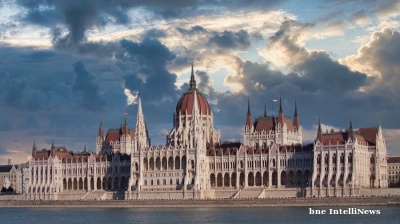The Kremlin is preparing for a protracted conflict and putting the Russian economy on a war footing. Details from the draft 2023-2025 budget show that spending on the Russian army this year will amount to almost RUB5 trillion ($86.2bn), up from the RUB3.5 trillion originally planned. In subsequent years spending will also exceed forecasts.
The extra spending is to cover the surge of troops being sent to Ukraine following Russian President Vladimir Putin's partial mobilisation order on September 21.
According to some estimates, 300,000 draftees will cost the Russian federal budget RUB1.3 trillion per year. This is slightly less than the budget's surplus in the first half of this year. The salary of a contract soldier sent to Ukraine is RUB250,000. One contractor will cost the Ministry of Defence RUB373,000 a month, if contractors and other expenses are taken into account, and 300,000 would be RUB112bn a month.
“Mobilisation spending will put a new burden on the federal budget, where this year, according to the Ministry of Finance, the deficit will be RUB1.7 trillion, and next year it will increase to RUB3 trillion (2% of GDP),” BCS GM said in a note.
Initially, RUB3.5 trillion was included in the 2022 budget, some details of which were released in the middle of September, under the “national defence” item, but that spending has now been dramatically increased.
At the same time, the Kremlin is increasing expenditures on the police, apparently fearing opposition protests, report independent journalists Farida Rustamova and Maxim Tovkaylo in a substack post on Putin’s escalation of the war.
According to expert calculations, Russia will spend at least RUB7.7 trillion on the war in Ukraine and the reconstruction of the annexed territories in 2022-2025.
War spending is likely to lift the breakeven oil price for the budget to $97 per barrel in 2022 vs $60 per barrel in 2021, says BCS GM.
“Oil and gas revenues have been the main support for the Russian economy in 1H22; however, since 2H22, the situation changed as sanctions pressure on Russian energy exports increased. Concurrently, the ruble strengthening also reduced the domestic currency value of oil and gas revenues. A combination of these forces together with higher budget spending increased the breakeven oil price for 2022 to $100 per barrel (last seen in 2014),” BCS GM said in a note.
In addition, the Ministry of Finance has ordered a 10% cut in expenditure across the board of non-protected items, excluding key payments like pensions.
The government surprised with an unexpected announcement in September that it was raising tariffs for households on energy, water and heat up to 9% early from December 1, instead of the scheduled mid-2023 increase within 4%. The move is especially sensitive for poorer Russians including pensioners.
And the business lobby protested loudly after the finance ministry increased the obligatory social payments as a way to raise taxes and revenues. Russia’s largest business lobby, RSPP, issued an unusually stark statement complaining about “surprising amendments to the system of social insurance payments which contradict earlier agreement [between large businesses and the state]”.
From 2023, the government plans to increase the base for calculating social insurance premiums. The single cap on fully contributory salaries will rise to RUB1.92mn. against the RUB1.57mn contribution planned before tough sanctions were imposed.
The maximum value of the base for calculating insurance premiums, which employers will begin to pay in a single payment from 2023, will be RUB1.917mn from January 1, 2023. This follows from the draft budget of the Social Fund, which RBC got acquainted with.
From 2023, Russia will merge the Pension Fund (PFR) and the Social Insurance Fund (FSS) into a single Social Fund. In addition to administrative changes, the merger involves a new model for paying insurance premiums: from 2023, all employers will pay both pension contributions and payments for social and medical insurance in the same amount (30% of the wage fund), but in the form of a single payment and based on the availability of a single base.
As long as the employee's cumulative total salary within a year does not exceed the base, companies pay the full tariff (30%) from it, and if the amount of earnings is higher, the tariff is reduced to a preferential rate of 15.1%. Thus the higher the marginal value of the base, the longer the full insurance premiums for the employee are transferred.
Russia’s budget deficit will stand at 0.9% of the gross domestic product (GDP), or RUB1.313 trillion, in 2022, according to the draft budget for 2023-2025 seen by PRIME on September 23.
Russia’s budget deficit will amount to 2% of GDP or around RUB3 trillion in 2023, Prime Minister Mikhail Mishustin said on September 20 at a meeting of the government’s budget commission.
In a speech in early September, Putin said there would be no deficit this year.
Budget revenue will amount to RUB27.693 trillion, including RUB11.666 trillion of oil and gas and RUB16 trillion of non-oil and gas income, while spending will be RUB29 trillion, according to the new draft budget that will be sent to the Duma for approval before the end of this year.
In 2023, budget revenue is expected to be more than RUB26.1 trillion and spending to hit RUB29.056 trillion.
The finance ministry plans to borrow RUB1.747 trillion through OFZ government bonds in 2023, RUB1.938 trillion in 2024 and RUB2 trillion in 2025 – less than half of the annual borrowing plans of preceding years.

The finance ministry's moves are designed to head off problems further down the road. Although Russia’s economy has been doing better than expected and its balance sheet looks strong, the structure of the government’s revenues contains some large weaknesses.
“While on the surface Russia’s fiscal accounts appear strong, with debt-to-GDP at about 17% and a fiscal deficit of 2% in 2022, they hide important vulnerabilities due to Russia’s reliance on oil and gas revenues. Energy extraction and export taxes account for more than 40% of total federal budget revenues. Without them, Russia’s federal budget would have been in persistently large deficits over the last decade,” Institute of International Finance (IIF) said in a note.
Russia has been enjoying very large inflows from oil and gas exports after the war pushed the prices of both commodities up to record levels.
Russia's current account was still well in surplus in August. According to the preliminary estimate of the Russian central bank, the surplus was $16.5bn in August. The surplus was clearly smaller compared to the peak readings of recent months, but still at a historically high level. In January-August, a surplus of around $180bn was accumulated – more than double the previous record. This year, the surplus has also varied exceptionally widely from month to month.
“However, fiscal dynamics are even more critical for Russia’s ability to wage the war on Ukraine. Due to the high commodity prices and the seasonally low government spending, Russia ran a fiscal surplus of RUB1.3 trillion during 1H2022. However, a combination of the ruble strengthening, sharply lower gas exports, as well as somewhat higher expenditure pushed the federal budget into substantial deficits in July – August. While expenditures picked up markedly in July, the trend did not continue into August, so we will be closely watching the developments into the end of the year,” IIF said.
Even though Russia initially budgeted a fiscal surplus of 1.1% of GDP this year, IIF expects it to reach a deficit of about 2-3% in 2022. With Russia already cutting off the gas supply to Europe and oil prices stabilising, pressure on Russia’s fiscal accounts will continue to mount.
“For now, Russia can finance higher spending from the National Wealth Fund (NWF), currently at about 8% of GDP or $200bn, and domestic MinFin bond (OFZ) issuance,” says IIF. “However, up to 40% of the NWF appears to be already committed to anti-crisis measures, and close to $35bn allegedly frozen alongside the Bank of Russia reserves.” The finance ministry restarted OFZ issuance in September, which had been temporarily cancelled due to market volatility. The first auctions were heavily oversubscribed, given the limited investment opportunities for domestic banks flush with liquidity. Russia’s financial sector is dominated by public banks (accounting for more than two-thirds of total assets) with room to increase their holdings.
“The financial system has largely recovered from the March liquidity shock, and the structural liquidity surplus of the banking system vis-à-vis the Bank of Russia is back at RUB2.8 trillion ($47bn), which should allow banks to absorb significant additional issuance,” says IIF.
But the government is well aware that things will get tough soon. The medium-term budget for 2023 and beyond assumes a 25% reduction in oil and gas revenues by 2025 and a fall in oil prices to about $60 per barrel.
As a result of the sharp decrease in oil and gas revenues, the government is considering bringing back the fiscal rule that requires saving all oil and gas revenues above a certain Urals price cut-off point, reports IIF.
“We believe the authorities are overly optimistic expecting other revenues to fully compensate for the loss of oil and gas inflows, thus allowing government spending to stay flat in nominal terms. The government will need to find spending cuts of at least 10-15% during this period to keep the deficits in the 2-3% range,” says IIF. The finance ministry has already ordered 10% spending cuts, but it remains to be seen if they can be implemented.
In response to the combined oil price drop and sanctions shock in 2014, Russia implemented expenditure cuts on a par with most of the IMF crisis programmes.


News

Thousands rally in Tirana demanding justice for former KLA leaders on trial in The Hague
Albanian PM Edi Rama called the protest, urging all Albanians to unite behind what he described as a “national cause” — defending the honour and legacy of Kosovo’s wartime leaders.

Putin's meeting with Trump in Budapest is a slap in the face for the EU
As preparations get underway for a highly anticipated summit between Russian President Vladimir Putin and former US President Donald Trump in Budapest, attention is turning to an unusual but politically sensitive detail: how will Putin get there?

Zelenskiy leaves Washington empty handed, Trump and Putin head to Budapest to talk business
Ukrainian President Volodymyr Zelenskiy went into a White House meeting with US President Donald Trump on October 17 hoping for a big arms deal. He came out of the meeting empty handed.

Taiwan’s KMT elects new leader
Cheng Li-wun, the only female contender among six candidates, defeated former Taipei mayor Hau Lung‑bin by a wide margin, winning over 50% of the ballot in the leadership race for Taiwan’s opposition Kuomintang on October 18.




